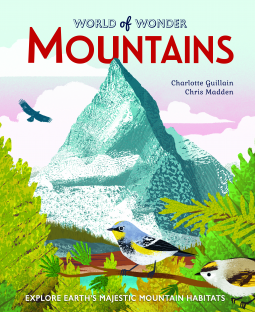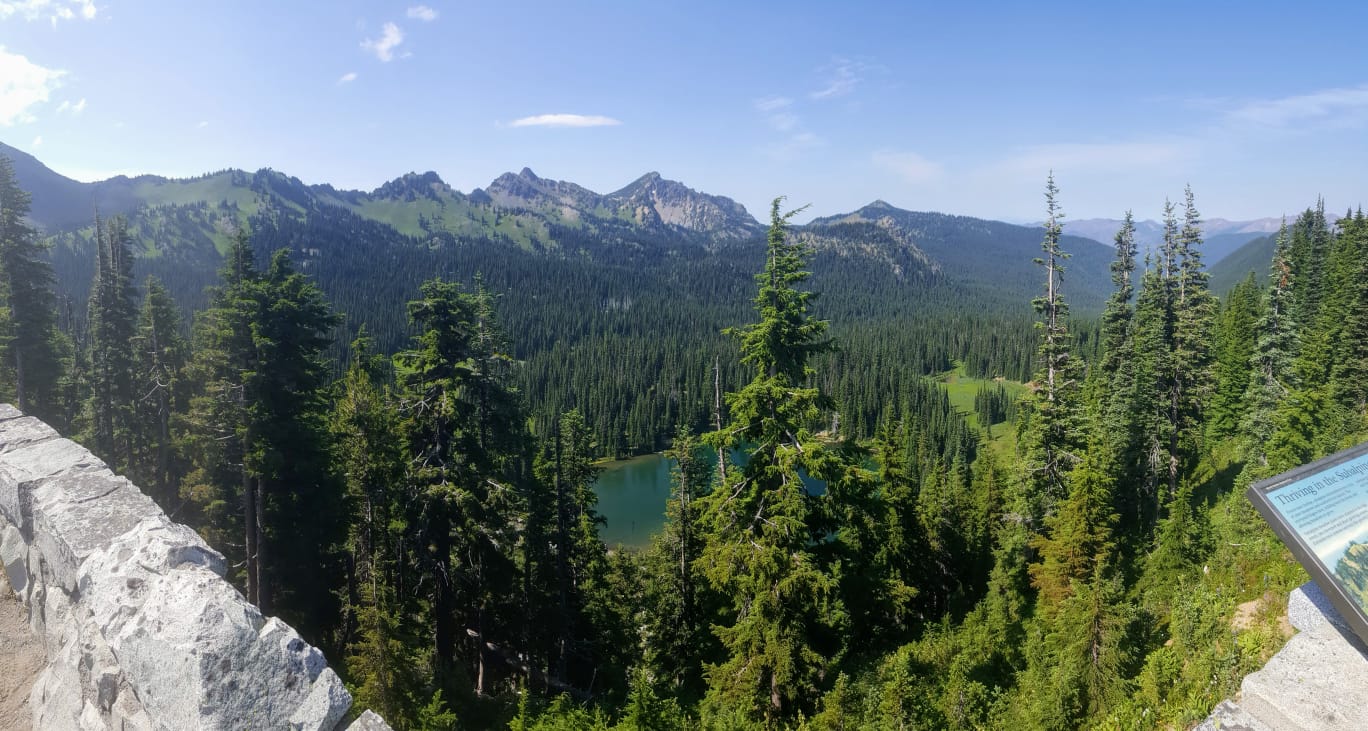Over the weekend, we visited the mountains. It was exceedingly warm with bright sunshine. That was a good thing as we got to see flies, bees, butterflies, and birds flew around the meadows. A short trek brought us to the warm, beautiful fields bursting with wildflowers.
A steep climb brought us under the tree line. We could peek at the brilliant blue sky with only a few drifting stratus clouds, and birds fly past us. It was less warm under the trees. The perfect views of flower-covered forest floor, the glaciers, and the rugged mountain peaks’ in privacy was exhilarating. Sighting wild animals, colorful birds, and rare seclusion made the trip completely worthwhile.

(C) Varun Iyer, 2020
Mountains with forests, snow-covered peaks, and glaciers are the norm in some parts of the world. In some countries, the mountains have no forests. In some places, the mountains are located in a warmer, drier climate and have no snow. The fascinating thing is that there are countries with no mountains at all!
Having grown up in a hilly city, visiting mountains has been a part of my life from a young age. For my doctoral dissertation, I did my complete fieldwork in the Western Ghats of India. I cannot even imagine what it feels like not to have mountains close by. So, when Charlotte, author of the book Mountains, mentioned that she grew up in a place with no mountains, I was surprised. I had to speak with her to find out what she learned about mountains while writing her book. In her book on mountains, she beautifully writes about mountains on every continent and the unique ways mountains interact with us.
In this blog post, I would like you to meet Charlotte Guillain. She is the author of the book Mountains published by Quatro Press. Like her, I, too, have a special affection for the Rockies. We drove through the Canadian Rockies one winter to enter the United States. Please read the excellent book and use it in your classroom, library, or environmental education class. Please visit her website and get in touch with her

1. In your book Mountains, you weave the flora, fauna, and interesting facts that engage the readers. What do mountains mean to you?
I grew up in very flat parts of the world, so mountainous landscapes have always felt very distant and exciting to me. The plants, animals, and geographical features are all so different and fascinating to me. I’m at my happiest in the clean air and blue sky at the top of a mountain without another soul in sight!
2. Tell us about the writing process you followed to design the book.
We wanted this book to be ‘lyrical non-fiction,’ so more than just a factual description. We wanted the text to capture the beauty and magic of the scene or the stealth or wonder of the creature being described. So I guess I wrote the book in two stages – first researching and drafting the factual text and then trying to craft it into a more lyrical prose that reflected the content.
3. In your book, you present the major mountain ranges in the world. Which range is your favorite? Why?
This is a hard one! I haven’t seen all the mountain ranges described in the book in real life, but I have been lucky enough to visit the Canadian Rockies on a family trip of a lifetime, so I think they will always be my favorite.
4. Given the COVID-19 situation and travel ban now, how can people develop a closeness with the mountains?
Even before COVID, writing this book underlined for me the fact that many of the problems faced by our amazing mountains are caused by humans. If we’re lucky enough to still be able to get to mountains without causing a negative impact, then that’s wonderful. But in writing the book, I realized that watching beautifully filmed documentaries and reading about mountains can go a long way in taking us there in our imaginations. I’ll always be grateful for the adventures that books have taken me on!
5. What is the most surprising thing you discovered while writing this book?
It’s amazing to think what a wealth of life there is so high up in our mountains. Animals like the incredible Alpine ibex are able to climb up completely vertical cliff faces at a dizzyingly high altitude – they’re fascinating!
6. What is the best way for teachers and parents, especially those who are homeschooling, to use this book in their lessons and classrooms?
I’ve already had the chance to read extracts from this book with teachers and children, and we had great fun exploring ways we can write non-fiction in a more lyrical way. It’s really interesting to use writing techniques such as alliteration, similes, and onomatopoeia to convey atmosphere and detail. Children might also want to focus on one aspect of the book that interests them and do some research to find out more about it.
7. Please share any final thoughts you have about nature, mountains, and how people can regularly connect with nature.
As we’ve all discovered over the last few months, wherever we live, there is nature to be found and cherished in our surroundings. Once we open our eyes and start to notice the beautiful world around us, we’re more likely to care about and look after it. I know that getting out into green spaces is vital for keeping my life healthy and balanced, and I wish that for all my readers, too.
